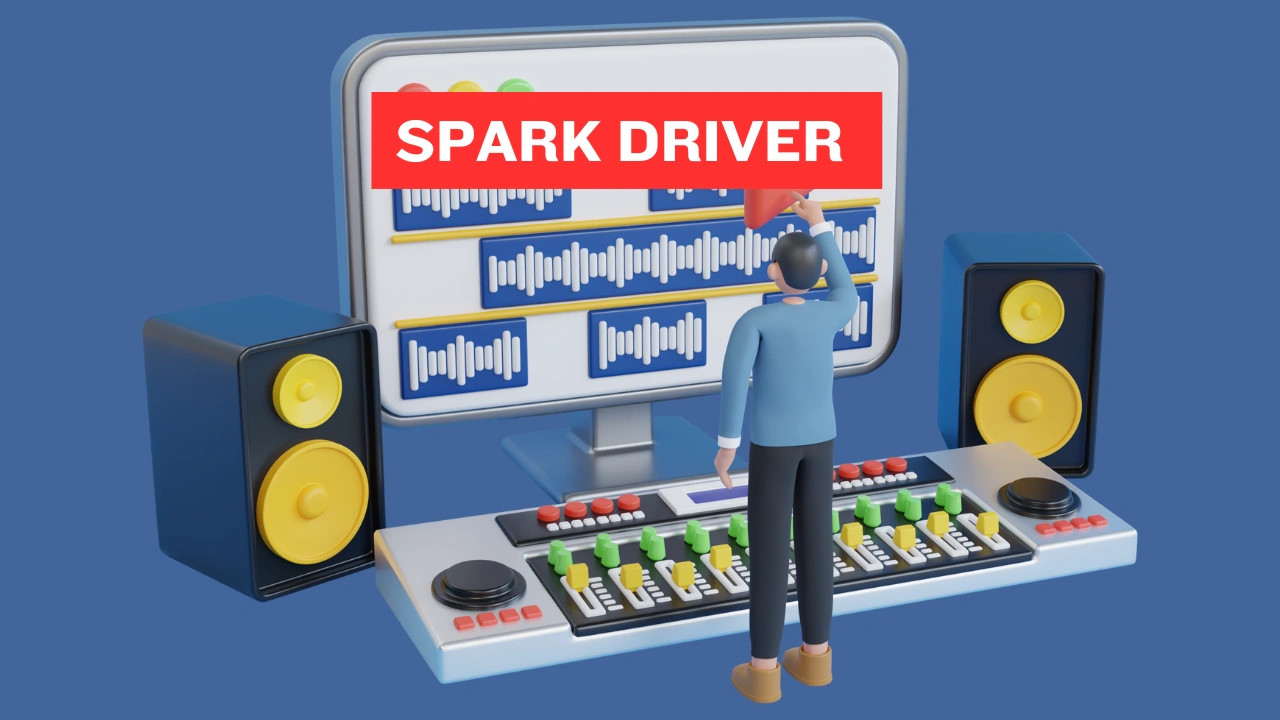Spark Driver Revealed: Fast-Track Your Big Data Success
In the world of big data, Apache Spark has emerged as one of the most powerful tools for processing massive datasets efficiently. Central to its operation is the Spark Driver, which plays a pivotal role in managing and coordinating Spark applications. Understanding the Driver is essential for developers, data engineers, and anyone interested in mastering Spark.
What is a Spark Driver?
The Spark Driver is the brain of a Spark application. It is the main process responsible for orchestrating the execution of a job. When you submit a Spark application, the driver takes charge of breaking it down into smaller tasks, scheduling these tasks, and distributing them across various nodes in a cluster. The driver also handles communication with executors and monitors their progress to ensure smooth execution.
The driver builds a Directed Acyclic Graph (DAG) that represents the logical execution plan. This DAG is then divided into stages and tasks, which are executed by the Spark Executors. The Driver ensures that tasks are executed efficiently, retries failed tasks, and provides updates on the job’s progress.
Also Read: Coyyn.com Business Revolutionizing the Digital Economy
How the Driver Works
When you run a Spark application, the driver starts by creating Resilient Distributed Datasets (RDDs). These RDDs are collections of data distributed across the cluster, and the driver applies transformations and actions on them. The driver then constructs a DAG to map out the sequence of operations.
After building the DAG, the driver breaks it down into smaller stages. These stages are further divided into tasks, which are sent to the executors for execution. The driver manages all these tasks and ensures they are completed successfully. If a task fails, the driver retries it to maintain data integrity and job accuracy.
The Role of the Driver in Cluster Management
The Driver is crucial in managing resources in a distributed environment. It communicates with the cluster manager, such as YARN, Mesos, or Kubernetes, to request the necessary resources for the application. Once the resources are allocated, the driver schedules tasks to the available executors. This coordination ensures that the application uses the cluster’s resources efficiently.
In Spark’s client mode, the driver runs on the local machine where the application is submitted. In cluster mode, it runs on one of the cluster’s nodes, providing better resource management for production environments.
Key Features of the Spark Driver
The Driver is equipped with several features that make it a cornerstone of Spark applications. It is responsible for tracking the execution of tasks, managing the DAG scheduler, and monitoring the application’s progress. It also handles fault tolerance by retrying failed tasks and ensuring the application can recover from unexpected issues. These features make the Driver a robust and reliable component of the Spark framework.
Spark Driver Memory Management
Memory management is an essential aspect of the Spark Driver’s operation. If the driver runs out of memory, the entire application may fail. Therefore, it is critical to allocate sufficient memory for the driver when submitting a Spark job. You can set the driver’s memory using the --driver-memory option in the spark-submit command. Proper memory allocation ensures that the driver can handle large DAGs and manage extensive task execution efficiently.
Spark Driver vs. Executor
While the Spark Driver coordinates and manages the application, executors are responsible for executing the tasks. Executors run on worker nodes and perform the computations assigned by the driver. They also provide in-memory storage for RDDs, which improves the performance of iterative tasks. The driver and executors work together to ensure the successful execution of a Spark job.
| Aspect | Spark Driver | Executor |
|---|---|---|
| Role | Manages the entire Spark application | Executes tasks assigned by the driver |
| Location | Runs on the driver node or local machine | Runs on worker nodes |
| Task Responsibility | Schedules and monitors tasks | Executes tasks and stores RDD data |
Common Challenges with the Driver
Despite its importance, the Driver can encounter challenges that affect the performance of Spark applications. Memory limitations are a common issue, as insufficient memory can lead to application failure. Another challenge is driver node failure, which can disrupt the entire application. To mitigate these risks, it is essential to configure the driver’s memory and fault tolerance settings properly.
How the Spark Driver Handles Data Shuffling Between Tasks

Data shuffling is one of the most critical and resource-intensive operations in Apache Spark. It occurs when data needs to be redistributed across different stages of a job, usually during transformations like groupByKey, reduceByKey, or join. The Driver manages this shuffling process by identifying tasks that require data from other partitions and coordinating the transfer of this data across the cluster. During shuffling, the driver keeps track of dependencies between tasks to ensure each partition reaches the correct executor. Efficient handling of shuffling is essential to reduce network overhead and avoid performance bottlenecks, which can significantly impact job execution time.
What Happens If the Driver Crashes During Job Execution?
When the Driver crashes, the entire Spark application fails because it manages task scheduling and communication with executors. In client mode, this is more likely to happen due to local resource limits, whereas cluster mode offers better fault tolerance by allowing the cluster manager to restart the driver. To prevent data loss, techniques like checkpointing and configuring automatic retries are essential for ensuring recovery and job continuity.
Best Practices for Optimizing the Driver
To ensure optimal performance, it is crucial to follow best practices when configuring the Spark Driver. Allocate adequate memory based on the size of your dataset and the complexity of your transformations. Use checkpointing to save intermediate results and reduce the risk of losing progress due to failures. Additionally, monitor the driver’s logs to identify and resolve issues promptly.
Real-World Use Cases of the Spark
The Driver plays a vital role in various real-world applications, from data analytics to machine learning. For example, in a large e-commerce platform, the driver can manage complex data processing pipelines to analyze user behavior and optimize recommendations. In financial institutions, it orchestrates fraud detection systems by processing massive transaction datasets in real time. These use cases highlight the versatility and importance of the Spark Driver in modern data-driven environments.
How the Driver Differs from Other Big Data Coordinators
The Driver differs from coordinators in frameworks like Hadoop’s JobTracker by using a dynamic DAG-based execution plan instead of static job plans. This enables Spark to optimize tasks at runtime and handle iterative workloads more efficiently. Unlike batch-oriented systems, the Driver leverages in-memory processing, reducing disk I/O and improving speed. This makes it more suitable for interactive applications and real-time analytics compared to traditional frameworks.
Conclusion
The Spark Driver is the cornerstone of any Spark application. It acts as the central coordinator, managing tasks, monitoring progress, and ensuring the efficient execution of jobs. By understanding the Spark Driver’s role and following best practices, you can optimize your Spark applications and achieve better performance in your data processing tasks. Whether you’re working in data analytics, machine learning, or real-time processing, mastering the Spark Driver is essential for success.







